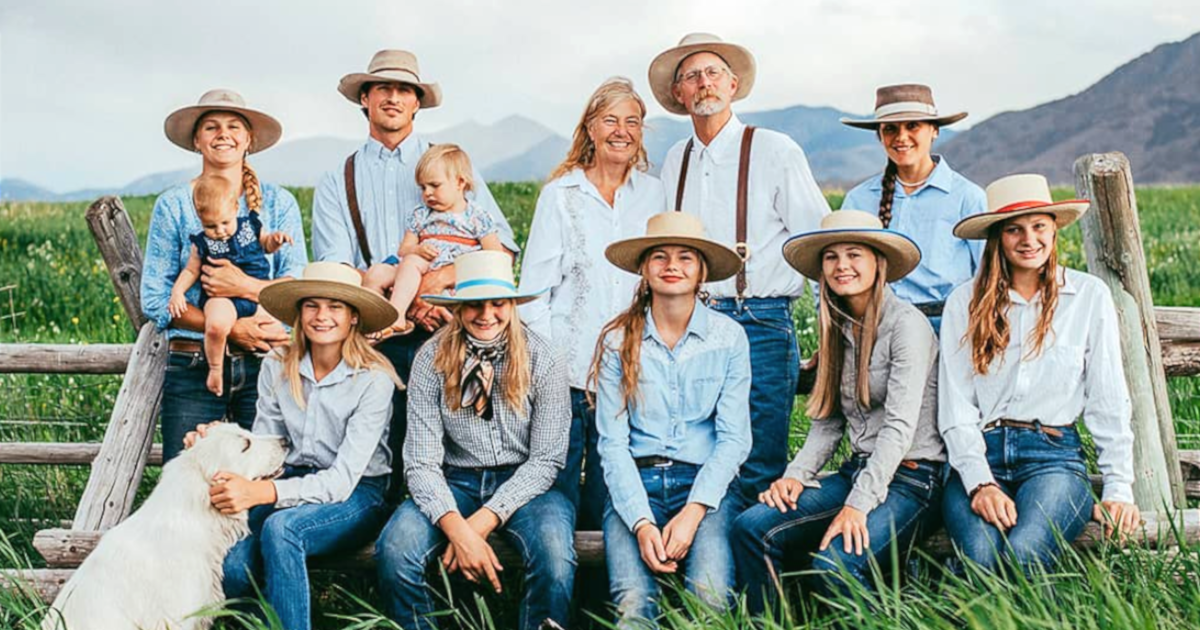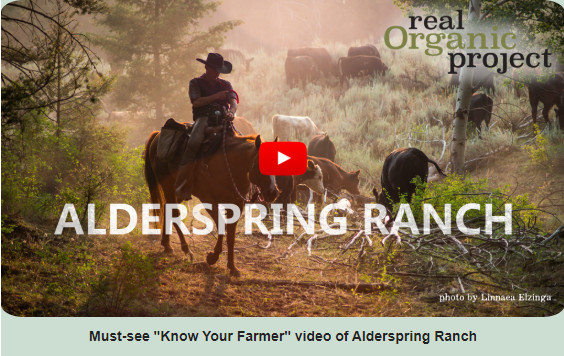
What Do a Rancher and a Vegan Have in Common?
May 5, 2020 | Linley Dixon
Real Organic Project
Glenn Elzinga is an endlessly interesting cowboy. I spent a day with him and four of his seven daughters in the backcountry of the Salmon Challis National Forest.
If your time is limited today, please stop reading this letter and watch this “must-see” video about Alderspring Ranch!
One day I received a call at my farm in Durango, Colorado, letting me know that it was time to come visit – the Elzingas would be bringing the cattle back home from the range! I was in for a long day bumping along the back roads to follow the 300-head beef herd.
Living in the arid mountain west, I understood the harm caused by cattle left alone to graze on public lands. Cattle prefer to spend the summer in the shady riparian areas. From the impact of grazing, the species-rich waterways turn to sagebrush and become depleted of the nutritious, native grasses and forbs. Aspen groves disappear. Many ranchers end up needing to supplement the cattle’s sagebrush diet with molasses and missing essential vitamins and nutrients. End result: concentration of manure, soil compaction, and erosion. Everything is wrong. The law of return is broken.
But, the Elzingas ranch differently and I was there to learn first hand about a better way.
While most beef cattle are left alone on the range, bringing destruction to the waterways, the cattle at Alderspring Ranch are continuously herded for optimum health of the land.
The Elzingas also sleep out in the rangeland with their cattle! When wolf predation was high, they decided to “inherd,” or live with their cattle, as a peaceful way to coexist with wolves.
Inherding allows for the high intensity, short-duration grazing that we now know benefits the land, and provides an economic boost to a rancher as well (due to higher weight gain and zero predation).
“Sure it requires more work,” admitted Glenn, “but I know it’s the right thing to do.”
The cattle at Alderspring never stand still. They graze as they slowly move, strategically guided by the Elzingas on horseback, across the high elevation sagebrush steppe.
The herd’s continuous movements mimic the impact of the 50-90 million buffalo that once helped to shape the carbon sequestering American grasslands. Surprisingly, there are roughly half the number of cattle harvested each year in the US than there were buffalo!
But the large majority of cattle are mismanaged. The “conventional” methods include tilling the soil to grow heavily sprayed and fertilized grain. Then more fossil fuels are used to ship that grain to feedlots. These grim confinement “farms” are a manure management nightmare and the dust generated is a health hazzard. Some of them are wrongly certified as organic.
We now know that “pulse grazing” of grasslands results in greater carbon sequestration than grasslands left alone. When the top half of grasses are grazed, the base of the grass puts out more young green shoots. Cows also help convert tough and woody plant material into manure – speeding up the nutrient cycles in the soil.
The management changes made by the Elzingas have resulted in dramatic ecological benefits. They have also made healthier meat for their customers. We are what we eat and cattle are what they eat too!
While most beef cattle graze monoculture pastures, those at Alderspring Ranch graze “a salad bar” of over 2,500 different plant species.
While most beef cattle “finish” their last 4-6 months eating grain in an over-crowded feedlot, the cattle at Alderspring Ranch live out their entire lives on pasture. (Be aware that even “grass-fed” and most USDA “certified organic” beef cattle “finish” in a CAFO).
Eaters must begin to question the “efficiencies” of modern agriculture. Are they considered “efficient” only because of cheap oil? Are we willing to pay for the external costs down the road?
Farmers and ranchers have already found a better way. But eaters are the ones who drive their systems with the purchases we make every day. The Elzingas couldn’t do what they do without us.
What food choices did you make today? As Glenn reminded me, choosing wisely isn’t always easy, but it’s the right thing to do!
Linley Dixon is associate director of the Real Organic Project and head farmer at the Adobe House Farm in Durango, Colorado. Published with the author’s permission.

